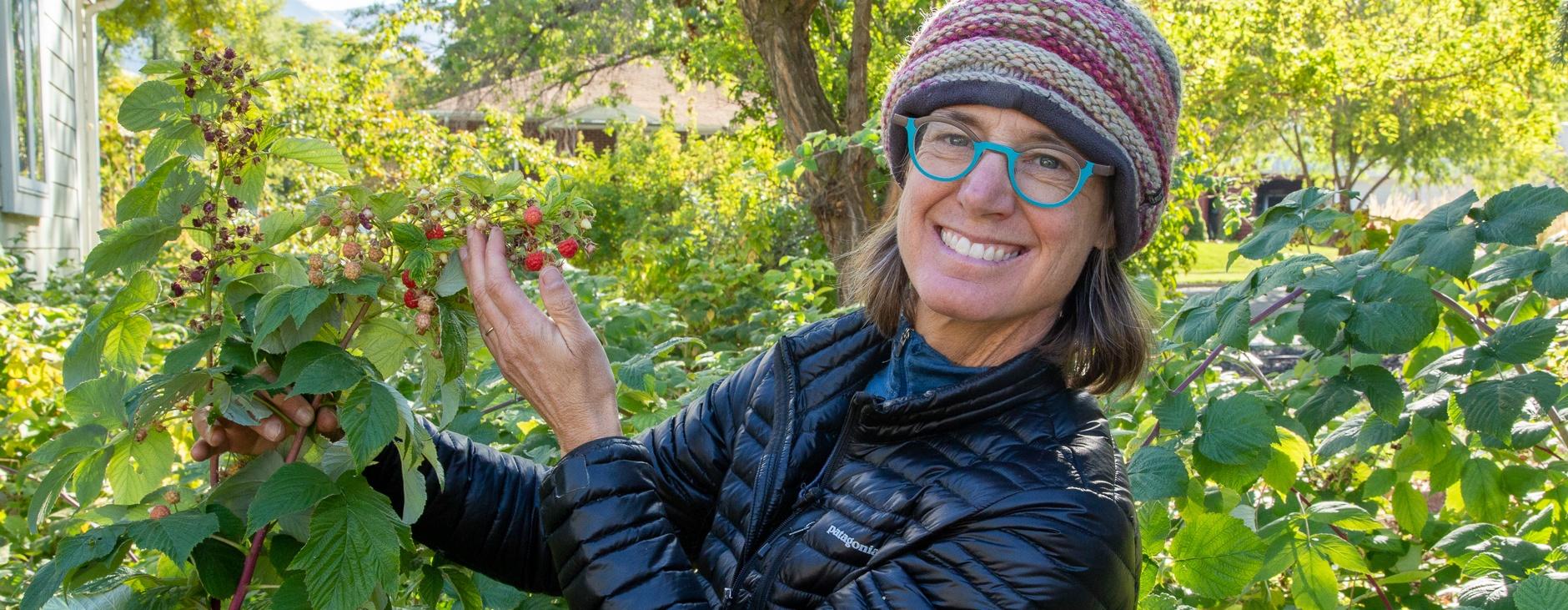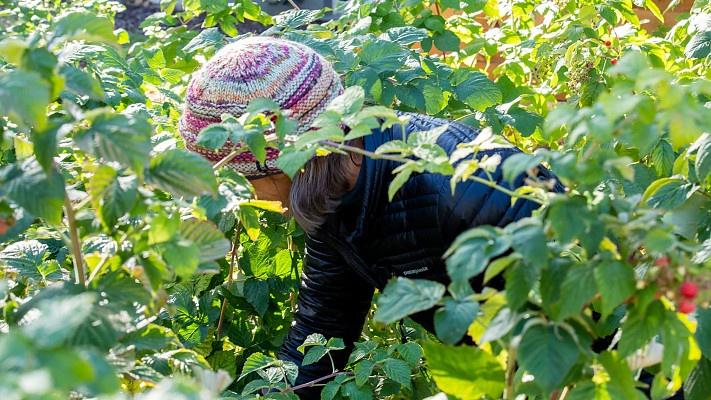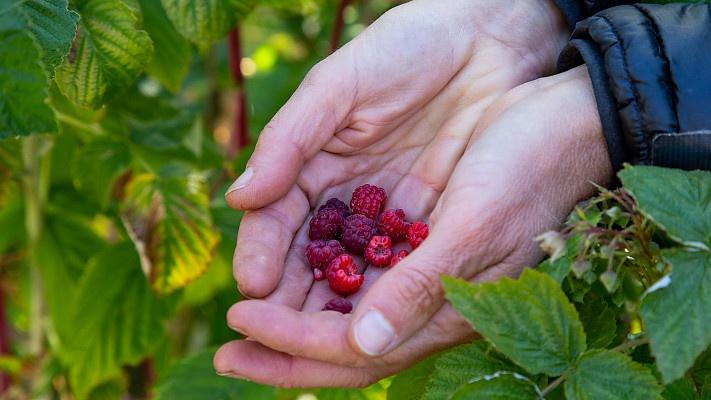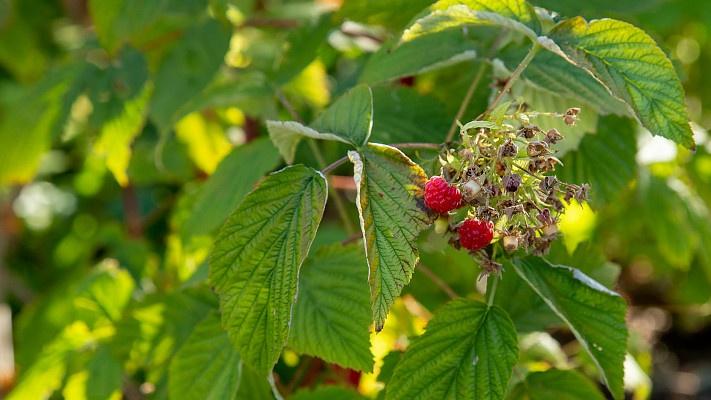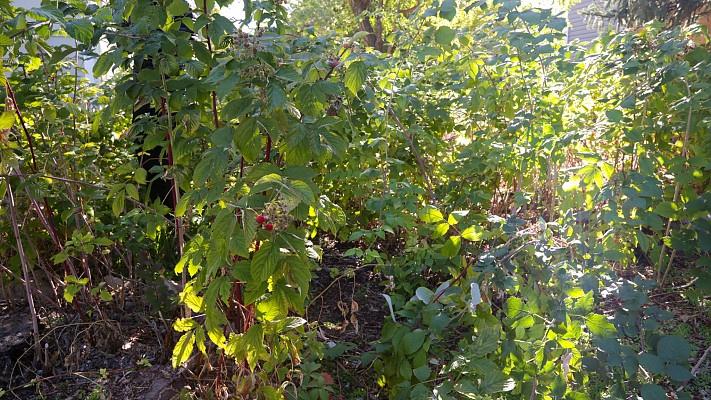Raspberries 101
Before we dive into Ashley’s methods, knowing some basic raspberry facts will help ensure a bountiful raspberry harvest.
Raspberry plants are made of multiple canes, or reed-like stalks, that grow from a crown at the base of the plant. Crowns will be connected by an underground branch called a stolon. While the crowns of raspberries are perennial, the canes only last one or two growing seasons. Check out a diagram from NC State Extension here to see all the different parts of a raspberry plant.
Raspberries come in a variety of colors, including gold, purple, and black. But if you’re looking for a variety that stands up to Utah’s cold winters, choose red raspberries. There are two types of red raspberries available to grow — June bearing and everbearing. These different types require different harvest times and maintenance.
June bearing (aka: summer bearing)
- Canes will fruit every other year.
- Will bear fruit all at once, typically in early summer.
- May be susceptible to cold temperatures.
- Sometimes referred to as “floricane,” or canes with second-year growth.
Everbearing (aka: fall-bearing)
- Canes fruit every year.
- Fruit will trickle throughout late summer until the first frost.
- Can withstand colder temperatures better.
- Sometimes referred to as “primocanes,” or canes with first-year growth.
For more information about raspberry planting and maintenance, visit the USU extension site, which provides a list of Utah-specific resources for growing raspberries in your home garden.
To Grow Raspberries In Utah: Keep It Simple!
So, how does Ashley maintain her huge raspberry patch with less effort than it would take to maintain a side yard of lawn and growing beds?
Ashley likes to call her raspberry patch “a pretty low-maintenance, perennial, edible crop” and notes that “the biggest thing is picking and cutting the canes.” We’ll go over how she picks and prunes below.



